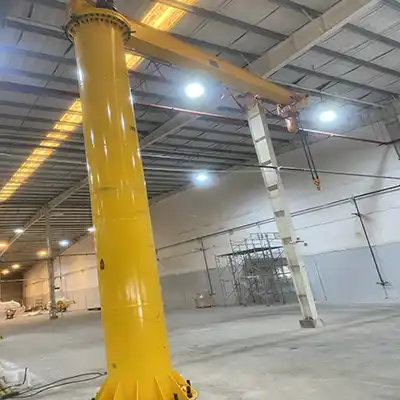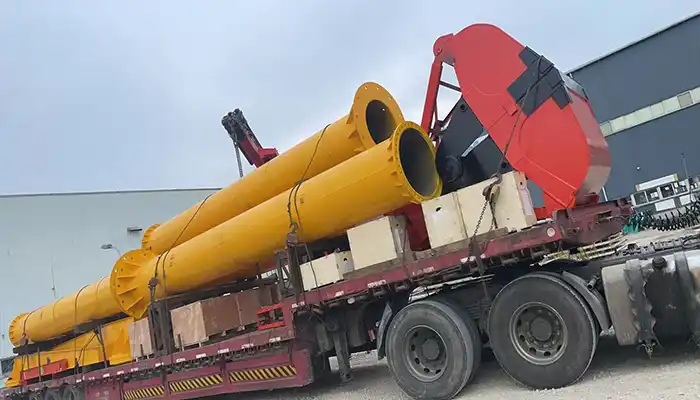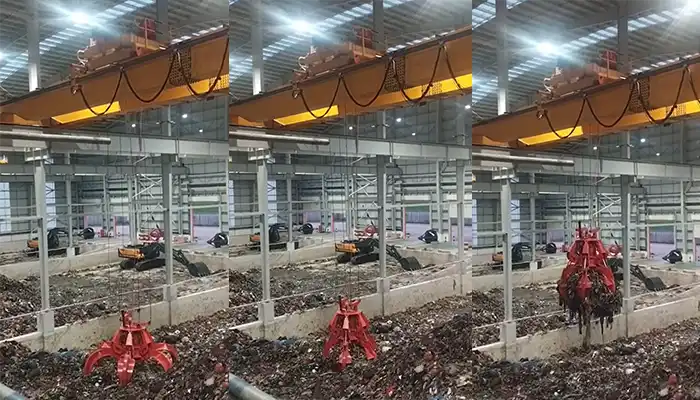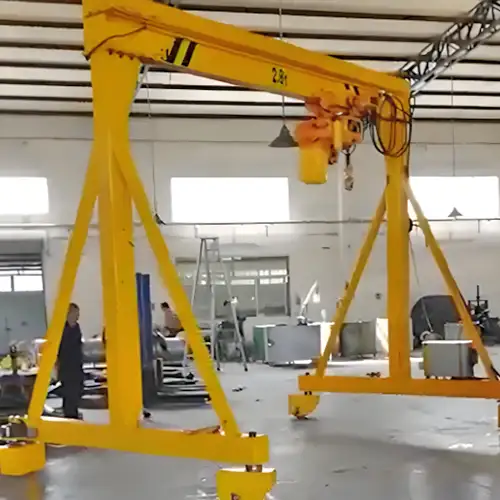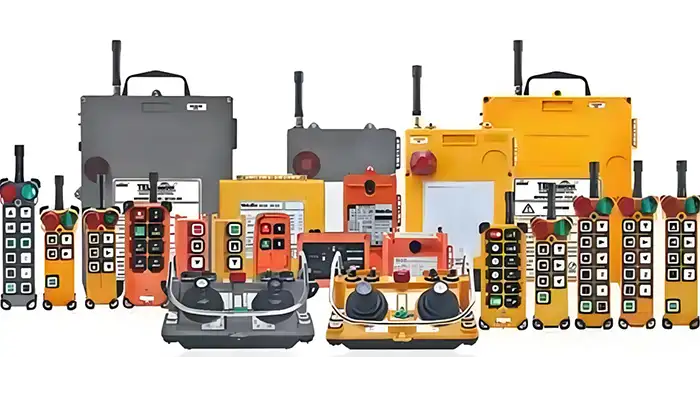
Smarter Tandem Lifts with Wireless Sync Remote Controllers
Introduction: What Makes Tandem Lifting So Tricky—and How Remote Control Simplifies It
What is Tandem Lifting?
Tandem lifting involves using two or more hoists to lift a single load together. This method is used when the load is too long, too wide, or simply too heavy for one hoist to handle alone. It's commonly seen in steel mills, shipyards, and construction sites.
Why Is It a Challenge?
The biggest issue with tandem lifting is coordination. The hoists must move at the exact same time and speed. If one hoist moves faster or slower, the load can become unbalanced, tilt, or even fall. That puts equipment and workers at serious risk.
What Often Goes Wrong?
Here are some common problems that make tandem lifting difficult:
- Timing mismatches between two operators
- Poor visibility when hoists are far apart
- Delays from hand signals or verbal commands
- Uneven lifting that creates safety hazards
This is why tandem lifting usually requires skilled operators—and even then, it can be slow and stressful.
How Do Radio Remote Controllers and Receivers Help?
Remote controllers allow a single operator to control both hoists at the same time. These systems send wireless signals to receivers installed on each hoist. As a result, both hoists respond to the same command, move together, and stay perfectly synchronized.
What Are the Benefits?
Switching to a remote control system makes tandem lifting:
- Easier to manage, since one operator can do the job alone
- Safer, because the operator can choose the best viewing position
- Faster and more reliable, with no need for coordination between two people
Final Thoughts on the Introduction
Tandem lifting is necessary in many heavy-lifting scenarios, but it doesn't have to be complicated. With a good radio remote control system, the job becomes simpler, safer, and more efficient. This kind of upgrade can make a big difference in day-to-day operations. Let's now take a closer look at how these systems actually work.
What is Tandem Lifting?
Tandem lifting is when two or more hoists or cranes are used to lift the same load at the same time. Instead of one machine doing all the work, the lifting is shared. The equipment must move together, with perfect timing and balance.
This method is often used when the load is too long, too wide, or too heavy for a single hoist to handle safely.

tandem lifting of eot cranes - overhead crane with double hook for seperate and tandem lifting
When Is It Used?
You'll find tandem lifting in situations like:
- Handling long steel beams that can't be supported at a single point
- Lifting bulky machinery or equipment during installation or relocation
- Moving heavy molds, dies, or parts in steel mills and fabrication shops
- Loading and unloading large containers in ports and shipyards
- Assembling large components in construction or shipbuilding projects
These are jobs where size, weight, and shape make single-point lifting unsafe or impossible.
What Makes It Complicated?
Tandem lifting isn't just about using two hoists—it's about moving them as one. That takes coordination. If one hoist moves faster or slower than the other, here's what can go wrong:
- The load tilts or swings, which can damage it
- Uneven force puts extra stress on equipment
- Safety risks increase for workers nearby
- The load could fall if the imbalance is too severe
This is why tandem lifts often require two skilled operators, constant communication, and even spotters watching the move.

The Role of Radio Remote Controllers in Tandem Lifting
What Are Radio Remote Controllers?
Radio remote controllers are handheld or waist-mounted devices that let operators control hoists and cranes wirelessly. Instead of using a fixed pendant control or a cabin, the operator can move freely and control the equipment from a safe distance.
These controllers send radio signals to receivers mounted on the hoists. The hoists then respond to the commands instantly.
For tandem lifting, this means one controller can send identical commands to two or more hoists at once—ensuring they move together in perfect sync.
Key Features That Matter
Not all remote controllers are the same. Here are some important features that make a big difference during tandem lifting:
- Ergonomic Design
Lightweight and shaped for easy grip, even during long operations. Some come with belt clips or shoulder straps to reduce fatigue. - Long Range
Most industrial remotes offer a range of up to 100 meters or more, so the operator can always find a safe and clear viewing spot. - Multiple Hoist Control
A single controller can be programmed to operate two, three, or even more hoists—at the same time or one at a time. - Reliable Signal
Modern remotes use secure, interference-resistant radio frequencies. No delay, no misfires. - Feedback Options
Some remotes come with LEDs or vibration alerts to confirm when a command is received or to warn about signal loss.
How Do They Improve Operator Control?
Using a radio remote controller allows one operator to:
- Control both hoists at once, reducing the need for extra personnel
- Stay in full view of the load, avoiding blind spots and risky positions
- React quickly to unexpected movement, improving safety
- Make fine adjustments smoothly and accurately
This level of control is hard to match with wired pendants or dual-operator setups.
In short, remote controllers turn a tough, two-person job into a safer, smoother, and more efficient one-person operation. And when paired with a reliable receiver system, they become a powerful tool for handling complex tandem lifts.
The Role of Receivers in Enhancing Coordination
What Does a Receiver Do?
In a radio remote control system, the receiver is the part that's installed on the hoist or crane. It's like the ears of the system—it listens for the signal sent by the remote controller and translates that signal into movement.
Every time the operator presses a button, the receiver picks it up and sends the command to the hoist's motor and control system. This is what makes wireless operation possible.
How Does the Receiver Help with Synchronized Movements?
For tandem lifting, synchronization is everything. Two or more hoists need to lift, lower, or move at the exact same moment and speed.
Here's how the receiver system supports that:
- All receivers are tuned to the same controller or are part of the same programmed group.
- When the operator presses a command, each receiver responds at the same time.
- The hoists carry out the motion in parallel, ensuring balance and coordination.
- Some systems include feedback features to confirm signal reception or detect faults.
This coordination is extremely difficult to achieve with two separate controls or manual effort alone. Receivers make it automatic and precise.
Why Use Multiple Receivers for Tandem Lifting?
Having a dedicated receiver on each hoist offers several benefits:
- True synchronization – every hoist gets the same command instantly
- Simplified setup – no need for complex wiring between hoists
- Modular control – one operator can run two hoists together or switch to control them separately
- Flexibility – easy to reassign hoists to different remotes or configurations as needed
In short, receivers are what make tandem lifting with one controller actually work. They ensure that the hoists are not just moving—but moving together, safely and smoothly.
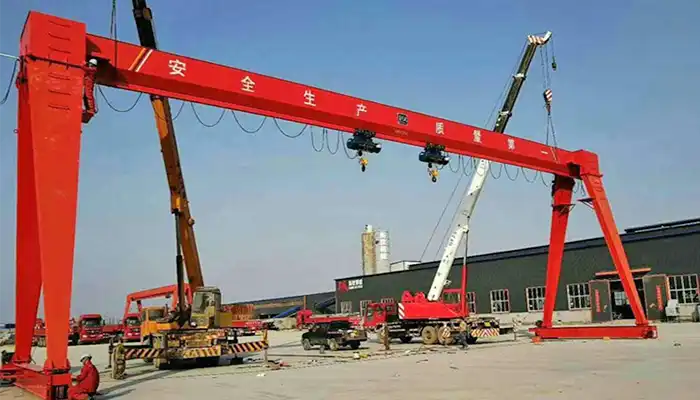
tandem lifting electric hoists gantry crane
Key Benefits of Radio Remote Controllers and Receivers in Tandem Lifting
Using radio remote controllers and receivers in tandem lifting brings practical advantages to the table. It's not just about going wireless—it's about lifting smarter, safer, and faster.
Improved Operator Control and Comfort
Manual pendant controls tie the operator to one spot, often in an uncomfortable or risky position. With a remote controller:
- The operator can move freely and find the best viewing angle
- Handheld or belt-mounted remotes reduce physical strain
- Controls are designed to be easy to use, even with gloves or in harsh conditions
- One operator can manage both hoists—no need to shout or signal to a second person
Increased Safety
Tandem lifts can be dangerous when visibility is limited or movements are out of sync. Remote control helps solve this:
- Operators stay away from the load, keeping a safe distance
- Better visibility means fewer blind spots and mistakes
- Emergency stop functions are immediate and accessible
- Operators can act quickly if something goes wrong
Enhanced Coordination
This is where remote systems shine—perfect timing between multiple hoists.
- One controller sends the same signal to all receivers at once
- Hoists lift, lower, and travel in unison
- No miscommunication, no delay
- Movements are smoother and more predictable
Faster and More Efficient Operations
Less time spent coordinating between two operators means:
- Faster lifts, with fewer pauses or checks
- No need to align signals manually—just press and go
- Fewer people involved, which simplifies team planning
- More lifts done per shift, boosting productivity
Reduced Risk of Errors
By removing guesswork and manual coordination, the chance of errors drops:
- Clear command flow from operator to all hoists
- No misread hand signals or mistimed actions
- Systems can include feedback or alerts to catch faults early
- Reduced load swing and strain on equipment
In short, radio remote controllers and receivers don't just simplify tandem lifting—they transform it. With better control, more safety, and improved efficiency, they're quickly becoming a must-have tool in modern lifting operations.
Real-World Applications and Case Studies
Radio remote-controlled tandem lifting isn't just a nice idea—it's already being used in busy industries where heavy and awkward loads are part of everyday work. Here's where and how it's making a real difference.
Industries That Use Tandem Lifting with Remote Control
Steel Mills
- Lifting long steel billets or coils with two hoists
- Handling casting molds or ladles that require balance
- Remote control helps operators keep distance from high-heat zones
Construction Sites
- Lifting precast concrete panels, beams, or long rebar bundles
- Easier coordination when space is tight and visibility is limited
- One operator can walk around and adjust lifting angle during the process
Shipyards
- Moving large metal plates or ship sections
- Lifts often need to be done in sync with millimeter accuracy
- Radio control helps avoid errors during positioning and fitting
Machinery Manufacturing Plants
- Lifting and rotating large machines or assemblies
- Safer handling with fewer workers involved
- Helps speed up installation or packaging lines
Conclusion
Quick Recap
Tandem lifting comes with serious challenges—weight, balance, and safety all matter. But with radio remote controllers and receivers, the job gets a lot easier.
- Operators get better control and comfort
- Movements stay in sync, reducing the risk of tilt or damage
- The entire process becomes faster and safer
- Fewer people are needed for each lift
- Mistakes go down, and productivity goes up
Remote-controlled lifting is growing fast in industries like steel, construction, shipbuilding, and more. As the tech improves, we'll likely see:
- Smarter systems that adjust lifting speeds automatically
- Built-in feedback for monitoring hoist performance
- Even more advanced coordination tools to handle bigger and more complex loads
For companies that deal with heavy or oversized materials, switching to radio remote lifting systems isn't just a nice upgrade—it's a smart move toward the future.
Whether you're operating in a steel mill, factory, or shipyard, modern lifting solutions can transform your workflow. With the right controller and receiver setup, you can lift with more confidence, speed, and control—every single time.
If you're thinking about upgrading your hoist system, now's a great time to explore how radio remote control can help you work safer, smarter, and more efficiently.
